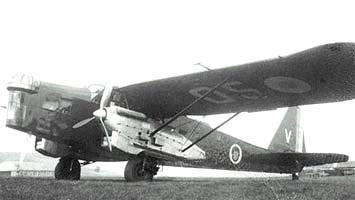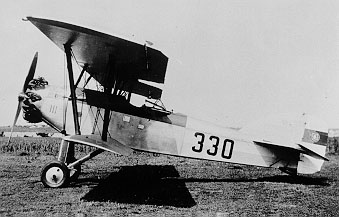Introduction
 French Pacific possessions in 1939 were the large territory of French Indochina (now Laos, Cambodia and Vietnam), New Caledonia and French Polynesia. The French Air Forces in the Pacific at that time had aircraft based in Indochina and possibly one or two in New Caledonia, although I have not been able to confirm that positioning as yet.
French Pacific possessions in 1939 were the large territory of French Indochina (now Laos, Cambodia and Vietnam), New Caledonia and French Polynesia. The French Air Forces in the Pacific at that time had aircraft based in Indochina and possibly one or two in New Caledonia, although I have not been able to confirm that positioning as yet.
When Germany occupied France in mid 1940 the rump French Government signed a treaty with Germany, and directed its overseas territories to support the Axis war efforts, wherever they might be. This rump Government became known as the Vichy Government.
Gradually most of these overseas territory French Vichy Governments rebelled against their political masters and established Free French Governments, which instead supported allied efforts in the war. New Caledonia changed its administration from Vichy to free French in early 1941, but French Indochina remained under Vichy Administration until well into 1945.
Consequently the Vichy French forces in French Indochina generally supported Japanese military efforts, although there were under-currents of Free French feelings and a degree of co-ercion involved in complying with Japan interests. This period was a time of considerable moral uncertainty for the France Military, either to support the Vichy government (and the Axis forces) or the Free French and Charles De Gaulle. One experienced survivor remarked “It was not a matter of doing ones duty; but rather of knowing what ones duty was”.
Colours
 Their colors were the French roundel with a blue centre, white mid section and a red outer ring. Vichy Air Forces were directed as well to paint a horizontal white strip on their rear fuselage and to add a further white outer circle to their roundel and it seems that this direction was generally adhered to for most Vichy Forces
Their colors were the French roundel with a blue centre, white mid section and a red outer ring. Vichy Air Forces were directed as well to paint a horizontal white strip on their rear fuselage and to add a further white outer circle to their roundel and it seems that this direction was generally adhered to for most Vichy Forces
Air Wars
Vichy French Indochina vs Japan (1) (1940)
In 1940 Japan and French Indochina signed an agreement, allowing access for Japanese Forces into Tonikin (North Vietnam). This agreement was negotiated by Japan to improve their access into China, against whom they were at war. However, Japanese Military Commanders had wider visions than their diplomats and Japanese Forces also entered into specific areas of Indochina in the north for which there was no formal agreement. This lead to military action between Indochina and Japan on the ground and also involved aircraft battles and air raids. The Japanese Air Forces were larger in plane numbers, and more modern than the Vichy Air Forces. Japan had access to relatively modern Army Ki 27 and Navy A5M (precursors to the Oscar and Zero); while the French had only a very few modern aircraft including some Monane M.S. 406 fighters and three twin engine Potez 631s. Their Bombers also included 4 heavy Farman F221 and 3 medium Potez 540s. However the main Vichy aircraft were 1920s era biplanes such as Potez 25s.
There was a Naval Escadrillie (Squadron) equipped with a few seaplanes as well. These were essentially based on Naval ships on an individual basis.
The Vichy Air Forces used their air fleet for reconnaissance and for limited ground attacks on Japanese forces. The Japanese air forces were used for the same purposes and for bombing as well. On 25th September 1940 there was a limited air battle. Score 1.1 (1 x Potez 25 and 1 K1 27). The next day there was a further Vichy claim (K1 21). Shortly afterwards the military action died down and temporary diplomatic agreements were reached. An uneasy truce existed.
Vichy French Indochina Vs Siam (Thailand) (1940-41)
Thailand in the late 1930s was a relatively strong country reasonably well equipped with aircraft and other war material. In the previous century, they had lost a number of provinces to their south, in the area administered by Vichy Indochina and this had left a sense of resentment. Their aircraft were a mixture of Japanese planes, including Oscars and Nates, Sallys and some older trainers. They also had American Curtiss Hawk 75s, Hawk 111s Vought Corsair V-100 biplanes and some Martin 193W bombers (B-10s) as well as Harvards used for training purposes. Taking advantages of the strife between French Indochina and Japan, Thailand invaded Indochina. On December 9th 1940 a Thai Corsair shot down a Vichy aircraft. Over the next few days more aerial combat occurred, with French claims of a Hawk 111 and a Corsair. Both countries carried out bombing raids on each others territory. On January 11th the Thai Air Force attacked in some strength, and the Vichy defenders were able to claim two further shoot downs. Later combat the same day saw three fighters and a bomber claimed by French Indochina for two French losses. An armistice was signed on January 31st under Japanese supervision. Most commentators record 4 Vichy victories for one (or two). Thai victories; but the actual Vichy victories seem now to be a little higher.
Vichy French Indochina vs Japan (2) (1942-45)
In January 1942 the Japanese shot down 2 Morane MS. 406s, mistaking them for AVG P40s.
Vichy French Indochina vs the AVG, the Chinese Air Force & the 14th USAAF 1942-45
The AVG made raids over Indochina, escorting Chinese (Russian made) Bombers (SB-3s) to attack Japanese air fields at Hanoi in January 1942. Further AVG raids were made in May 1942 before the AVG ceased operations in June 1942 but no aerial victories were claimed by the AVG Japanese A.A shot down some AVG pilots however.
The Vichy Air Forces acted generally in support of the Japanese military authorities. French Indochina was bombed and otherwise attacked by the A.V.G. and later by the air forces of both the American and Chinese Governments. The Japanese Army allowed the French Administration to remain in place, but the country was, especially in the north, a puppet client of Japan.
When Japanese planes sunk the HMS Repulse and Prince of Wales, Vichy Air Force mechanics serviced the Japanese planes that were flying on this raid.
For a good portion of the war allied (Dutch, British American and Chinese) soldiers and airmen who arrived in French Indochina by mischance were handed over by French authorities to the Japanese forces, whereupon most were executed. This handover policy did change later in the war.
On 14th December 1942, Bruce Holloway (76 FS, 23FG) promoted to Lieutenant Colonel the same day, wrote “Went to Hanoi with six bombers, 14 P40s and four P-43s” ….. I saw an old French biplane going towards Hanoi at low altitude. The Chinese intelligence stated the other day that the Japanese are not allowing the French to fly anymore, so I didn’t hesitate about shooting this airplane down. Turned around and dived on the old crate – one short burst tore it up and set off the gasoline. It made a good blaze. One man bailed out and I watched him land in the river” Holloway shot down another French biplane a week later.
French Air Fleet Composition and Numbers
1939-45 The French air fleet in French Indochina was made up largely of the Armee De l’Air, with some naval aircraft as well (Aeronautique Navale.). In May 1940 the Armee de l’ Air had –
 Potez 25 x 32 (1920s biplane)
Potez 25 x 32 (1920s biplane)
Farman 221 x 4 (long range heavy bomber)
Potez 542 x 6 (medium bomber)
Loire 130 x 8 (recon and rescue seaplane)
By September 1940 these numbers had diminished somewhat, but had also been strengthened by the acquisition of 16 modern Morane Saulnier 406 (only partially armed) and 3 Potez 631s, all of which were confiscated by the Vichy authorities from shipments bound for China.
The Aeronautique Navale had 3 Loire 130 and 3 G.L. 382 (all seaplanes).
After the war with the Thais; the Vichy Air Force had approximately 63 serviceable planes, including 14 Morane 406s left in service.
A year later, at the end of 1942, only 44 planes remained in flyable condition. Attrition and further combat with the 14th United States Air Force served to reduce this number still further over the next 3 years.
Post War Aircraft
A more modern French Air Force in Indochina was established with United States equipment at the end of the war. These aircraft was used to deal with national uprisings in various parts of French Indochina. Some interim use was made of Japanese Aircraft left in the country at the close of hostilities. They included a number of Oscars (and one Dinah) used by the French Air Forces for a limited period, while the Fleet Air Arm made some use of several Jakes and one Rufe sea plane to support their Catalinas.
Conclusion
The French Air Forces in the Pacific were centred around French Indochina. These Air Forces fought initially against the Japanese Air Force, the Thais and later on against the AVG, the Chinese and 14th Air Force. Their equipment was mostly obsolete and not upgraded during the war, except for some M.S Marine 406s which were taken from a confiscated shipment bound for China. Even these planes were not fully armed as the 20mm canon they were normally supplied with, were not seized with the rest of the shipment, consequently limiting their effectiveness. It is possible that some Vichy airmen flew Japanese planes, considerable numbers of which was based in French Indochina during the war years.
written by : John Douglas



